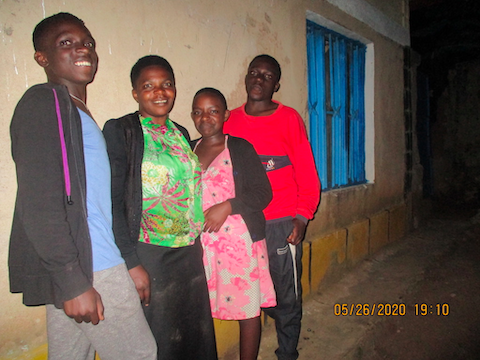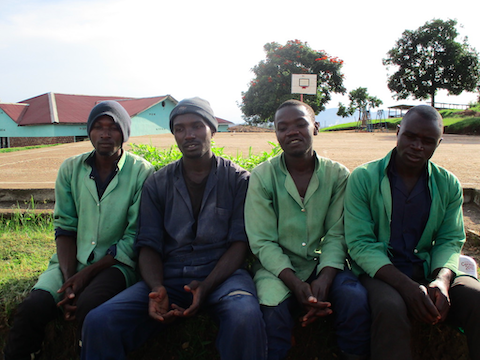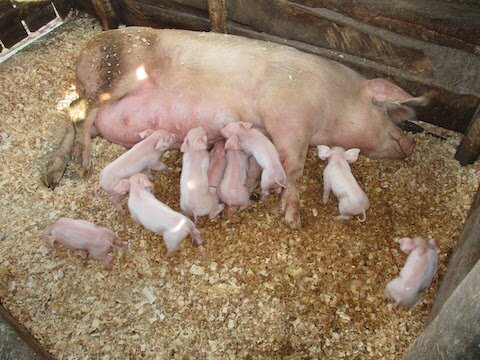Pigs at top, cows in middle, chickens on bottom.
Built one level at a time. Seems like the pigs should be on the bottom, not the top.
Drainage is well contained and not a problem as it is collected and used in biogas production.
A short history of the farm
Our farm started as a place purchased to move 40 chickens from the boys’ compound in
Gitarama town. When we rented a compound to start a home for boys, 40 chickens went with the property. Chicken dirt and little boys were not a good mix. We decided to move the chickens out into the country, so we bought a piece of land for that purpose. Not to move the boys, just the chickens. Later we moved the boys and all of Urukundo to this land. The cow first came as a wedding gift from one of our employees, so we needed a cow shed. A visitor from Ringgold, Pennsylvania, USA, decided we should have pigs. So like Topsy in “Uncle Tom’s Cabin” (age again) the farm just grew.
It is now a productive part of Urukundo Village.
News from the Farm
Bringing you up-to-date, farmwise.
At our last monitor and evaluation meeting, it was decided to reduce the number of cows from nine to three, not counting calves.
Owning cows means wealth in Rwanda, but providing grass and food for them is a big problem. We have tried different types of grasses and maize (corn) fodder. When you use the milk only for home use and not to sell, two fresh cows are enough. We do sell the calves, but that does not add up to enough income to support the cows.
What to do?
After much deliberation, it was decided to keep three cows, one for milk and two to produce babies. OK, maybe I am not so knowledgeable, but as I see it, one cow would be giving milk, another would be nearly ready to deliver and the third one would meet with a bull.
Make sense???
Where does the farm make its money? The chicken part of the farm is our main source of revenue. It was decided to convert all but three stalls for the cows into chicken houses.
With more than 100 laying hens, we use the eggs at the home and sell eggs in the community. We also sell young layers to beginning farmers. Chicken manure is also sold as garden fertilizer to community growers.
The largest number of chickens are broilers. These are raised on a rotating basis. We try to bring in day-old chicks every month as we sell full-grown broilers each month. Our customers are hotels, restaurants, schools, other NGOs and our village. On any given day, we have more than 3,000 broilers.
We are trying to get more customers, but we need to have more space for more chickens. We have an old building on the farm that can be torn down and a storage barn could be built.
The building has a bad roof and holes where small animals invade and birds fly in and eat the grain. It is also not a good size for storing food for the animals.







































